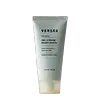What's inside
What's inside
 Key Ingredients
Key Ingredients

 Benefits
Benefits

 Concerns
Concerns

 Ingredients Side-by-side
Ingredients Side-by-side

Water
Skin ConditioningDicaprylyl Carbonate
EmollientTrimethylolpropane Tricaprylate/Tricaprate
EmollientTridecyl Trimellitate
EmollientButylene Glycol
HumectantPropanediol
Solvent3-O-Ethyl Ascorbic Acid
Skin ConditioningNonapeptide-1
Skin ConditioningCistus Incanus Flower/Leaf/Stem Extract
Skin ConditioningSodium Lactate
BufferingButyrospermum Parkii Butter
Skin ConditioningPyrus Malus Fruit Extract
Skin ConditioningLens Esculenta Fruit Extract
Skin ConditioningPolygonum Aviculare Extract
EmollientCitrullus Lanatus Fruit Extract
Skin ConditioningTroxerutin
Skin ConditioningPolyglyceryl-3 Methylglucose Distearate
EmulsifyingPolyacrylate Crosspolymer-6
Emulsion StabilisingCetearyl Glucoside
EmulsifyingCetearyl Alcohol
EmollientGlycerin
HumectantDimethicone
EmollientCaprylhydroxamic Acid
Maltodextrin
AbsorbentPolysilicone-11
Ammonium Acryloyldimethyltaurate/Beheneth-25 Methacrylate Crosspolymer
Emulsion StabilisingSodium Phosphate
BufferingSodium PCA
HumectantSodium Citrate
BufferingCaprylyl Glycol
EmollientPotassium Sorbate
PreservativeDisodium Phosphate
BufferingSodium Benzoate
Masking1,2-Hexanediol
Skin ConditioningCitric Acid
BufferingTetrasodium EDTA
Parfum
MaskingCI 15985
Cosmetic ColorantCI 19140
Cosmetic ColorantLimonene
PerfumingLinalool
PerfumingCitral
PerfumingWater, Dicaprylyl Carbonate, Trimethylolpropane Tricaprylate/Tricaprate, Tridecyl Trimellitate, Butylene Glycol, Propanediol, 3-O-Ethyl Ascorbic Acid, Nonapeptide-1, Cistus Incanus Flower/Leaf/Stem Extract, Sodium Lactate, Butyrospermum Parkii Butter, Pyrus Malus Fruit Extract, Lens Esculenta Fruit Extract, Polygonum Aviculare Extract, Citrullus Lanatus Fruit Extract, Troxerutin, Polyglyceryl-3 Methylglucose Distearate, Polyacrylate Crosspolymer-6, Cetearyl Glucoside, Cetearyl Alcohol, Glycerin, Dimethicone, Caprylhydroxamic Acid, Maltodextrin, Polysilicone-11, Ammonium Acryloyldimethyltaurate/Beheneth-25 Methacrylate Crosspolymer, Sodium Phosphate, Sodium PCA, Sodium Citrate, Caprylyl Glycol, Potassium Sorbate, Disodium Phosphate, Sodium Benzoate, 1,2-Hexanediol, Citric Acid, Tetrasodium EDTA, Parfum, CI 15985, CI 19140, Limonene, Linalool, Citral
Water
Skin ConditioningGlycerin
HumectantPropylene Glycol
HumectantSqualane
Emollient1,2-Hexanediol
Skin ConditioningCamellia Sinensis Leaf Extract
AntimicrobialAloe Barbadensis Leaf Juice
Skin ConditioningSodium Hyaluronate
HumectantSambucus Nigra Flower Extract
RefreshingSimmondsia Chinensis Seed Oil
EmollientTriticum Vulgare Germ Oil
EmollientVegetable Oil
Skin ConditioningPolyacrylamide
Carbomer
Emulsion StabilisingLaureth-7
EmulsifyingC13-14 Isoparaffin
EmollientTrisodium Ethylenediamine Disuccinate
Phenoxyethanol
PreservativePotassium Sorbate
PreservativeSodium Benzoate
MaskingCitric Acid
BufferingSodium Hydroxide
BufferingWater, Glycerin, Propylene Glycol, Squalane, 1,2-Hexanediol, Camellia Sinensis Leaf Extract, Aloe Barbadensis Leaf Juice, Sodium Hyaluronate, Sambucus Nigra Flower Extract, Simmondsia Chinensis Seed Oil, Triticum Vulgare Germ Oil, Vegetable Oil, Polyacrylamide, Carbomer, Laureth-7, C13-14 Isoparaffin, Trisodium Ethylenediamine Disuccinate, Phenoxyethanol, Potassium Sorbate, Sodium Benzoate, Citric Acid, Sodium Hydroxide
 Reviews
Reviews

Ingredients Explained
These ingredients are found in both products.
Ingredients higher up in an ingredient list are typically present in a larger amount.
1,2-Hexanediol is a synthetic liquid and another multi-functional powerhouse.
It is a:
- Humectant, drawing moisture into the skin
- Emollient, helping to soften skin
- Solvent, dispersing and stabilizing formulas
- Preservative booster, enhancing the antimicrobial activity of other preservatives
Citric Acid is an alpha hydroxy acid (AHA) naturally found in citrus fruits like oranges, lemons, and limes.
Like other AHAs, citric acid can exfoliate skin by breaking down the bonds that hold dead skin cells together. This helps reveal smoother and brighter skin underneath.
However, this exfoliating effect only happens at high concentrations (20%) which can be hard to find in cosmetic products.
Due to this, citric acid is usually included in small amounts as a pH adjuster. This helps keep products slightly more acidic and compatible with skin's natural pH.
In skincare formulas, citric acid can:
While it can provide some skin benefits, research shows lactic acid and glycolic acid are generally more effective and less irritating exfoliants.
Most citric acid used in skincare today is made by fermenting sugars (usually from molasses). This synthetic version is identical to the natural citrus form but easier to stabilize and use in formulations.
Read more about some other popular AHA's here:
Learn more about Citric AcidGlycerin is already naturally found in your skin. It helps moisturize and protect your skin.
A study from 2016 found glycerin to be more effective as a humectant than AHAs and hyaluronic acid.
As a humectant, it helps the skin stay hydrated by pulling moisture to your skin. The low molecular weight of glycerin allows it to pull moisture into the deeper layers of your skin.
Hydrated skin improves your skin barrier; Your skin barrier helps protect against irritants and bacteria.
Glycerin has also been found to have antimicrobial and antiviral properties. Due to these properties, glycerin is often used in wound and burn treatments.
In cosmetics, glycerin is usually derived from plants such as soybean or palm. However, it can also be sourced from animals, such as tallow or animal fat.
This ingredient is organic, colorless, odorless, and non-toxic.
Glycerin is the name for this ingredient in American English. British English uses Glycerol/Glycerine.
Learn more about GlycerinPotassium Sorbate is a preservative used to prevent yeast and mold in products. It is commonly found in both cosmetic and food products.
This ingredient comes from potassium salt derived from sorbic acid. Sorbic acid is a natural antibiotic and effective against fungus.
Both potassium sorbate and sorbic acid can be found in baked goods, cheeses, dried meats, dried fruit, ice cream, pickles, wine, yogurt, and more.
You'll often find this ingredient used with other preservatives.
Learn more about Potassium SorbateSodium Benzoate is a preservative. It's used in both cosmetic and food products to inhibit the growth of mold and bacteria. It is typically produced synthetically.
Both the US FDA and EU Health Committee have approved the use of sodium benzoate. In the US, levels of 0.1% (of the total product) are allowed.
Sodium benzoate works as a preservative by inhibiting the growth of bacteria inside of cells. It prevents the cell from fermenting a type of sugar using an enzyme called phosphofructokinase.
It is the salt of benzoic acid. Foods containing sodium benzoate include soda, salad dressings, condiments, fruit juices, wines, and snack foods.
Studies for using ascorbic acid and sodium benzoate in cosmetics are lacking, especially in skincare routines with multiple steps.
We always recommend speaking with a professional, such as a dermatologist, if you have any concerns.
Learn more about Sodium BenzoateWater. It's the most common cosmetic ingredient of all. You'll usually see it at the top of ingredient lists, meaning that it makes up the largest part of the product.
So why is it so popular? Water most often acts as a solvent - this means that it helps dissolve other ingredients into the formulation.
You'll also recognize water as that liquid we all need to stay alive. If you see this, drink a glass of water. Stay hydrated!
Learn more about Water